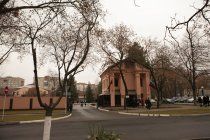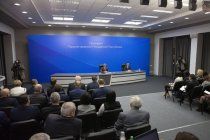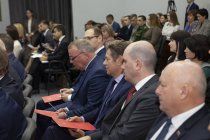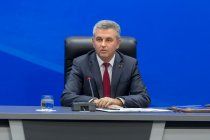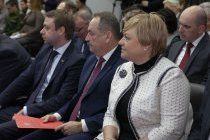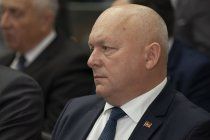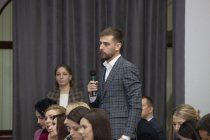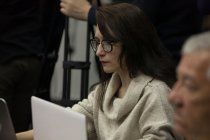 Русский
Русский English
English-







The Results of Outgoing Year
The PMR President Vadim Krasnoselsky held a press conference on the results of 2019. The President noted, on the basis of the results of the year of implementation of the Republic's Development Strategy. The press conference was attended by Chairman of the Supreme Council Alexander Korshunov, his deputy Galina Antyufeyeva, Head of Government Alexander Martynov, heads of state administrations of cities and regions of the republic, representatives of ministries, departments and the public.
Answering journalists' questions, Vadim Krasnoselsky spoke about the progress of the capital investment fund program, which has been operating since last year and aimed at repairing social facilities. Its action will be continued next year. In the republican budget of 2020, amounts of 316 million rubles are included for these purposes.
During 2018–2019, 38 hospitals, clinics and medical and obstetric centres, 54 kindergartens, 65 schools, 10 culture houses and one special correctional institution were repaired and built.
The President thanked the Supreme Council and the Government for the constructive dialogue and the development of a common position in the implementation of the capital investment fund for next year. The plans to repair 22 medical facilities (allocated amount of 30 million rubles), 25 schools, 22 kindergartens, 6 culture houses and 14 special correctional institutions.
Vadim Krasnoselsky focused on the problem of the functioning of housing and communal services.
In the course of the press conference, they talked about development of the road industry. The topic of concreting roads and paving sidewalks was raised. As Vadim Krasnoselsky noted, tiles is one and a half times cheaper than traditional asphalting. The positive aspects of such innovations in the road sector, the head of state called economic feasibility, import substitution, creation of new industries and jobs, transparent pricing.
Speaking about the support of public sector employees, the President noted that a program is being implemented in the republic aimed at completing the construction of unfinished residential buildings with the participation of citizens and the state.
The next area of work of the Supreme Council and the Government, the President called the creation of a program for public sector employees to purchase secondary housing through subsidies from the state and the employee himself. The relevant law-in-draft is in the parliament.
The search for a mechanism for implementing a program aimed at supporting the state in the acquisition of secondary housing by state employees is the task of joint work of the legislative and executive authorities.


